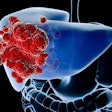Thin-section computed tomography (CT) has become the method of choice for the assessment of interstitial pneumonitis and bronchiectasis and other lung-related conditions, say researchers at the University of Munich in Germany. But the presence of cardiac motion artifacts can compromise the quality of these images. Subtle movement from cardiac pulsations could be misinterpreted as thickened bronchial walls, or may cause distortion that mimics the cystic appearance of bronchiectasis.
In a blind comparison, radiologists rated 210 images of patients with suspected disease of the pulmonary parenchyma who underwent thin-section CT with and without electrocardiographic gating. ECG gating helped reduce artifacts caused by cardiac motion such as distortion and double images; it did not affect respiratory motion artifacts. Based on the results, ECG gating has been made part of the routine thin-section CT protocol at their institution.
To see the full text of this article, visit
www.rsnajnls.org
In a blind comparison, radiologists rated 210 images of patients with suspected disease of the pulmonary parenchyma who underwent thin-section CT with and without electrocardiographic gating. ECG gating helped reduce artifacts caused by cardiac motion such as distortion and double images; it did not affect respiratory motion artifacts. Based on the results, ECG gating has been made part of the routine thin-section CT protocol at their institution.
To see the full text of this article, visit
www.rsnajnls.org
















